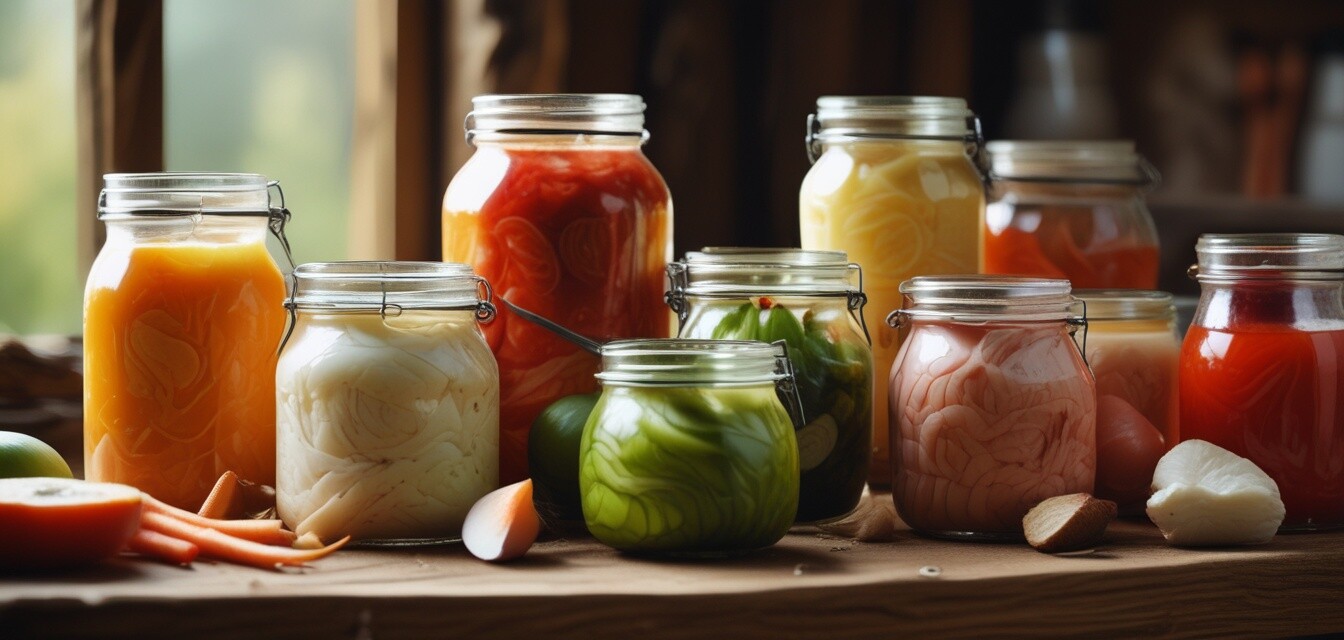
Trends in Fermented Foods for 2025
Key Takeaways
- Fermented foods are on the rise due to their potential health benefits.
- Consumer awareness about gut health is significantly influencing food choices.
- Innovative fermented products are becoming mainstream in restaurants and grocery stores.
- 2025 is seeing a shift towards plant-based fermentation methods.
- The use of traditional techniques in modern culinary practices is gaining traction.
Throughout history, fermentation has been an essential method of food preservation. However, in recent years, particularly as we approach 2025, the popularity of fermented foods is experiencing a significant resurgence. More than just a trend, these foods are gaining traction due to their perceived health benefits and unique flavors. Let’s explore what to expect in the culinary world regarding fermented foods in the coming year.
The Rise of Fermented Foods
Fermented foods such as kimchi, kombucha, and yogurt are rapidly entering the consumer market. As health consciousness continues to soar, these foods are transforming from niche products to everyday staples. The surge in demand for products that enhance gut health is leading to exciting innovations in the culinary arena.
Consumer Awareness and Demand
With increasing awareness of gut health's importance, consumers are actively seeking out fermented foods. Many people believe that these foods can promote balance in their digestive systems, thus driving their popularity. According to surveys, more than 70% of consumers reported trying fermented foods last year, showcasing a solid shift in eating habits.
Innovative Fermented Products
In 2025, culinary experts expect a wave of creativity in the types of fermented foods available. Traditional methods are being adapted, and new flavors are being explored. Emerging products are becoming common in restaurants as chefs look to add unique tastes to familiar dishes.
| Food Item | Traditional Use | Modern Twist |
|---|---|---|
| Kimchi | Korean side dish | Added to tacos or sushi |
| Kombucha | Fermented tea | Flavored with exotic fruits |
| Tempeh | Meat substitute | Used in salads and wraps |
Plant-Based Fermentation Methods
2025 is also witnessing a shift toward plant-based fermentation methods. Many modern consumers lean towards vegetarian and vegan lifestyles, prompting food makers to innovate using plant-based alternatives. This trend not only aligns with health perspectives but also addresses sustainability concerns.
The Role of Traditional Techniques
Traditional fermentation methods are making a comeback as people seek authenticity in their food. Home fermenting is on the rise, with more individuals experimenting with fermentation processes in their kitchens. Resources for learning how to ferment foods at home are becoming widely available, fostering a community of home cooks eager to embrace this ancient art.
Pros
- Boosts gut health and digestion.
- Enhances flavor profiles in various dishes.
- Diversifies meals and encourages creativity in cooking.
Cons
- Some are sensitive to fermented foods and may experience side effects.
- Quality can vary greatly between brands.
- Fermentation processes require time and careful handling.
Where to Find Fermented Foods
With these trends emerging, it's essential to know where to find high-quality fermented foods. Grocery stores are expanding their selections, and farmers' markets often feature local producers making artisanal fermented products. Look for:
- Baking essentials that incorporate fermented ingredients.
- Kitchen appliances designed for fermentation, such as yogurt makers.
- Specialty ingredients for at-home fermentation.
Gourmet Restaurants and Fermented Fare
As mentioned before, gourmet restaurants are increasingly incorporating fermented ingredients into their menus. Enthusiastic chefs are experimenting with flavors to create innovative dishes that surprise and delight their guests.
Future of Fermented Foods
The future of fermented foods looks bright as we head into 2025. With ongoing research, greater consumer awareness, and innovative product offerings, the culinary landscape will continue to evolve. Keeping abreast of these trends will positively impact both our culinary experiences and our overall health.
To stay updated, check out our posts on cooking buying guides and cooking tips & techniques.
Tips for Incorporating Fermented Foods into Your Diet
- Start small: Begin by adding a small serving of fermented food to your meals.
- Experiment with different types: Explore a variety of fermented foods to find your favorites.
- Use them in new recipes: Incorporate fermented foods in dips, dressings, and marinades.